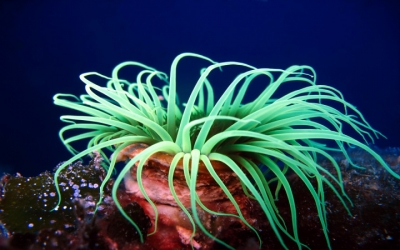
No, it is an animal that attaches itself to rocks. The anemone seizes and paralyses shrimps and shellfish with its waving tentacles before pulling them into its mouth to be digested.
The size of an organism’s genome doesn’t correspond to how simple or complex that creature’s body is, so some scientists hypothesized that more complicated links and networks between genes made for more sophisticated body plans.
Schwaiger and her colleagues at the University of Vienna analyzed the genome of the sea anemone, not only identifying genes that code for proteins, but also assessing snippets of code known as promoters and enhancers, which help turn the volume up or down on gene expression.
The team found the sea anemone’s simple anatomy hides a complicated network of gene interactions, similar to those found in higher animals such as fruit flies and humans. That belies the notion that more complex gene networks always correlate with more elaborate body plans, and also suggests the evolution of this level of gene regulation happened before sea anemones, fruit flies and humans diverged, about 600 million years ago.
Credit : Live Science
Picture Credit : Google




